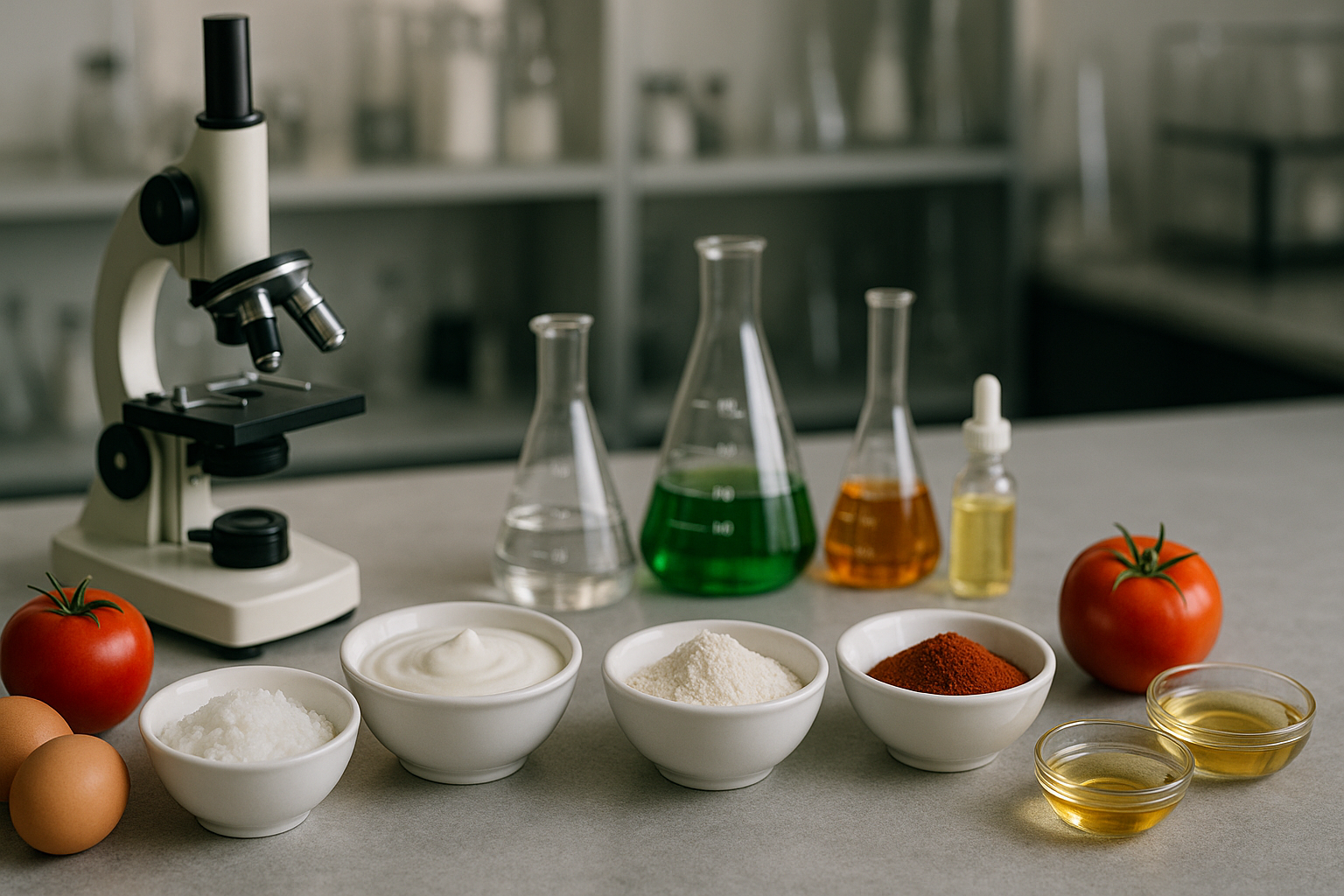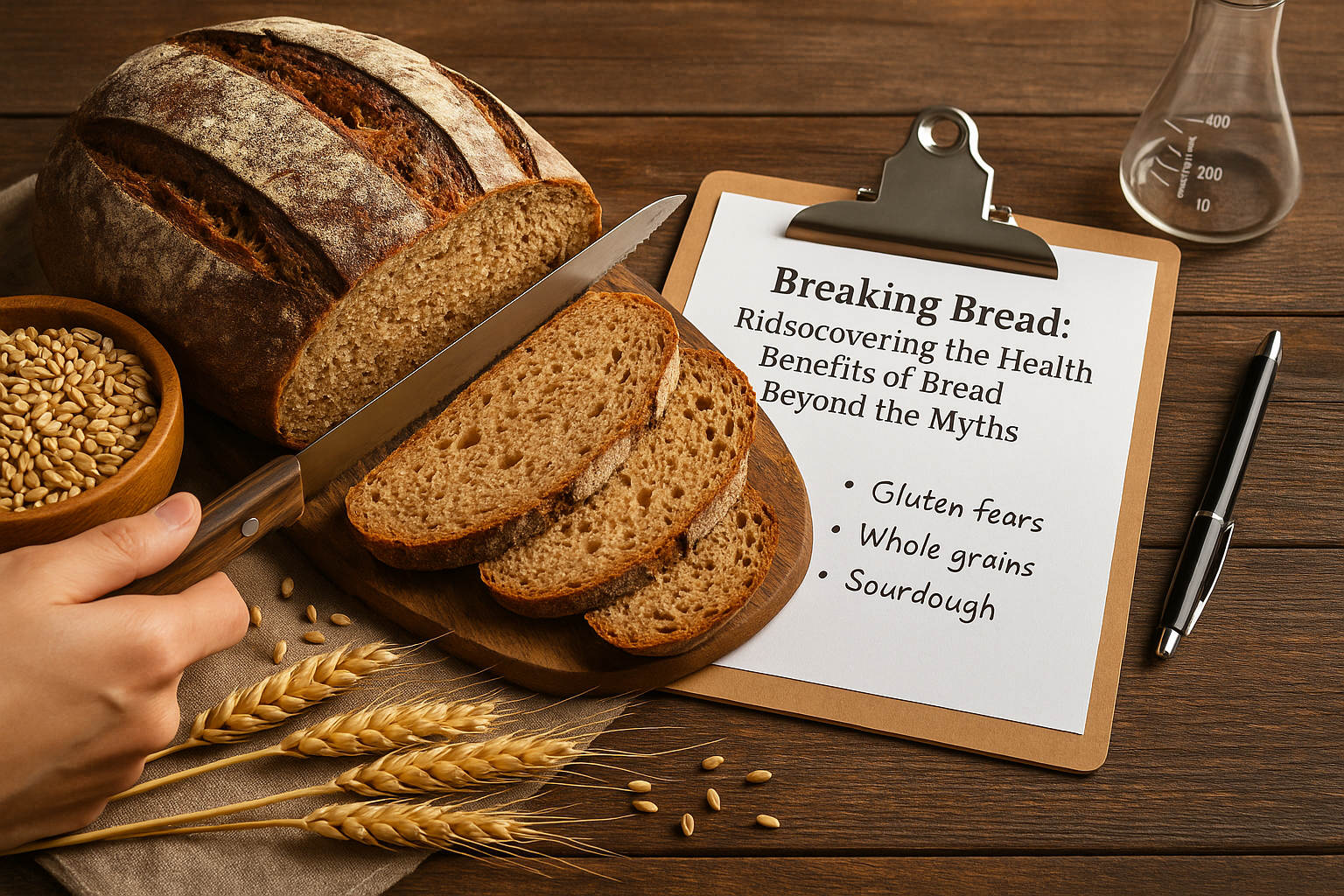
Common Hydrocolloids: Versatile Additives in the Food Industry
SUBSCRIBE TO OUR BLOG
Promotions, new products, and recipes.
Hydrocolloids are natural polymers, known as polysaccharides, that function as thickening agents, gelling agents, stabilizers, emulsifiers, water-binding agents, and texturizers in various food products. As food additives, they are widely used in the food industry to enhance the texture, stability, and other functional properties of food and beverage products.
In this section, we will explore the common hydrocolloids used in the food industry, their benefits, and practical applications. From agar agar to pectin, hydrocolloids offer a wide range of applications in various food and beverage products.
Key Takeaways:
- Hydrocolloids are natural polymers that function as thickening agents, gelling agents, stabilizers, emulsifiers, water-binding agents, and texturizers in various food products.
- Hydrocolloids play a critical role in enhancing the texture, stability, and other functional properties of food and beverage products.
- Common hydrocolloids include agar agar, carrageenan, guar gum, gellan gum, locust bean gum, alginate, xanthan gum, cellulose, and pectin.
- Hydrocolloids are natural, functional, and valuable tools for creating high-quality, innovative food products.
- Their versatility and functionality make them valuable in creating a wide range of food formulations.
Agar Agar
Agar agar is a popular hydrocolloid derived from seaweed extract. It is considered a versatile ingredient in the food industry due to its ability to act as a gelling agent.
As a hydrocolloid, agar agar is widely used for its thickening and stabilizing properties. It is particularly useful as a vegan alternative to gelatin, a common gelling agent derived from animal products.
Agar agar is extracted from various types of seaweed and is available in powder, flake, and bar form. It is known for its superior gelling properties, making it a popular ingredient in the production of jellies, jams, and desserts.
Aside from being a vegan-friendly alternative to gelatin, agar agar is also a natural thickener for soups and sauces, as well as a stabilizer for emulsions and suspensions. Its ability to form a gel at a low concentration and high melting point makes it a valuable ingredient in the production of various food products.
In summary, agar agar is a versatile hydrocolloid that acts as a gelling agent, thickener, and stabilizer. Its natural origin and vegan-friendly properties make it a valuable ingredient in various food and beverage applications.
Carrageenan: A Versatile Hydrocolloid for Improved Texture and Stability
Carrageenan is a hydrocolloid widely used in the food industry as a thickening agent and stabilizer. It is extracted from red seaweed and is a natural ingredient found in a variety of food products. Carrageenan plays an important role in improving the texture and stability of various dairy products, such as ice cream, yogurt, and cheese.
As a thickening agent, carrageenan helps to create a smooth and creamy texture in dairy products. It prevents syneresis, which is the separation of liquid and solid components, and helps to maintain the desired consistency and appearance of the product. Carrageenan is also known for its ability to form strong gels, making it an ideal ingredient for creating stable dairy-based desserts.
Aside from its use in dairy products, carrageenan is also found in various plant-based alternatives as a natural and vegan-friendly ingredient. It is commonly used in plant-based milks, such as almond milk and soy milk, to improve texture and create a more milk-like consistency.
Carrageenan's versatility as a hydrocolloid makes it an important ingredient in the food industry. Its functional properties make it a valuable tool for creating high-quality, innovative food formulations.
Guar Gum: A Versatile Hydrocolloid for Gluten-Free Bakery Products
Guar gum is a hydrocolloid widely used in the food industry as a thickening agent and stabilizer. Its natural origin and functionality make it a valuable tool for creating high-quality, innovative food formulations. In the world of gluten-free baking, guar gum plays a crucial role in enhancing the texture and structure of baked goods.
As a hydrocolloid, guar gum has the ability to thicken and stabilize various food products, including bakery items. Its high viscosity properties allow it to create a smooth and uniform texture, improving the overall appearance of gluten-free baked goods. Additionally, guar gum is known for its ability to improve the shelf life of bakery products, reducing the likelihood of staling and other quality issues.
Guar gum is particularly useful in gluten-free baking due to its ability to replace gluten, a protein found in wheat, rye, and barley that gives baked goods their elasticity and structure. In gluten-free products, guar gum acts as a binding agent, preventing baked goods from becoming crumbly and dry. Its water-binding properties also help to retain moisture, creating a more tender and flavorful product.
Bakery products, such as bread, cakes, and cookies, are just a few examples of where guar gum can be used in gluten-free formulations. Its versatility also makes it suitable for use in other baked goods, such as muffins, scones, and pastries.
| Benefits of Guar Gum in Bakery Products |
|---|
| Provides a smooth and uniform texture |
| Improves shelf life of baked goods |
| Acts as a binding agent in gluten-free products |
| Retains moisture, creating a more tender and flavorful product |
In conclusion, guar gum is a valuable hydrocolloid in the food industry, particularly in gluten-free bakery products. Its ability to thicken and stabilize baked goods, replace gluten, and improve moisture retention make it an essential ingredient in many formulations. As the demand for gluten-free products continues to grow, guar gum's versatility and functionality will ensure it remains a staple in the gluten-free baking industry.
Gellan Gum: A Versatile Hydrocolloid for Vegan-Friendly Suspensions
Gellan gum is a hydrocolloid that acts as a gelling agent and stabilizer in various food and beverage applications. It is a popular ingredient in vegan-friendly products due to its plant-based origins and functionality.
Gellan gum is known for its ability to create suspensions, giving liquids a smooth, uniform texture that is resistant to settling. It is commonly used in dairy-free products such as plant-based milk and yogurt alternatives, as well as in vegan-friendly desserts and beverages.
Aside from its stabilizing properties, gellan gum is also used as a thickening agent in certain applications. It can improve the viscosity and mouthfeel of products such as sauces, dressings, and syrups.
Compared to other hydrocolloids, gellan gum has a unique property that allows it to withstand high temperatures and acidic conditions, making it suitable for a wide range of applications.
Overall, gellan gum is a versatile hydrocolloid that offers functional benefits for vegan-friendly suspensions and a variety of other food and beverage products.
Locust Bean Gum: A Versatile Hydrocolloid for Improving Texture and Stability
Locust bean gum is a hydrocolloid widely used in the food industry as a thickening agent and stabilizer. Derived from the endosperm of the seeds of the carob tree, this natural polysaccharide offers various functional benefits that make it a valuable ingredient in ice cream and other dairy-based desserts.
One of the main advantages of locust bean gum is its ability to improve texture and mouthfeel. When added to ice cream, it helps prevent ice crystal growth and enhances creaminess, resulting in a smoother and more enjoyable product. It also contributes to the overall stability of the dessert, preventing syneresis and ensuring a longer shelf life.
In addition to its benefits in ice cream and other dairy-based desserts, locust bean gum can be used in a variety of other applications, including sauces, dressings, and bakery products. As a thickener and stabilizer, it helps improve texture and consistency, providing a more appealing and pleasant experience for consumers.
Furthermore, locust bean gum is a natural ingredient that can appeal to consumers who prefer clean labels and are looking for products that are free from artificial additives. Its functionality and versatility make it a valuable tool for creating high-quality, innovative food formulations that meet the demands of modern consumers.
Overall, locust bean gum is a valuable hydrocolloid that offers numerous benefits for improving texture and stability in various food products. Its natural origins, functionality, and versatility make it a valuable ingredient for food manufacturers looking to create innovative and high-quality products.
Alginate
Alginate is a hydrocolloid commonly used in the food industry for its unique gelling and film-forming properties. This hydrocolloid is derived from brown seaweed and is a popular ingredient in molecular gastronomy. Alginate is used in a process called spherification where liquids are transformed into gel-like spheres. This method is widely used in high-end restaurants to create visually stunning dishes.
Aside from its use in molecular gastronomy, alginate is also used in the food industry as a gelling agent and film-forming agent. Its ability to form a thin film on the surface of food products can enhance the product's texture and stability. Alginate is commonly found in dairy-based products such as yogurt, ice cream, and cream cheese, and is also used in fruit-based products such as jams and jellies.
Overall, alginate is a versatile hydrocolloid that offers a range of functional benefits in the food industry. Its unique properties make it valuable for creating innovative food formulations and its natural origins make it a popular choice for consumers seeking natural and sustainable ingredients.
Xanthan Gum: A Versatile Hydrocolloid for Thickening and Stabilizing
Xanthan gum is a commonly used hydrocolloid in the food industry, particularly in gluten-free products. This natural thickening agent and stabilizer is derived from the fermentation of bacteria that produce data-mce-fragment="1"> polysaccharides. Its unique properties make it ideal for use in a variety of food products.
One of the primary benefits of xanthan gum is its ability to enhance viscosity, which makes it an effective thickening agent. It can be added to sauces and dressings to create a smooth, consistent texture. Xanthan gum can also be used to stabilize emulsions, preventing them from separating over time.
Another advantage of xanthan gum is that it is gluten-free, making it a popular ingredient in gluten-free formulations. It can be used in place of wheat flour as a thickener for soups, gravies, and baked goods.
Overall, xanthan gum is a versatile hydrocolloid that offers a range of functional benefits for food formulations. Its ability to thicken, stabilize, and enhance texture makes it a valuable ingredient in sauces, dressings, and other food products.
Cellulose and Pectin
Cellulose and pectin are two commonly used hydrocolloids in the food industry. They act as texture enhancers and provide dietary fiber in various food products. Cellulose can be derived from plant sources, while pectin is commonly found in fruit-based products.
Cellulose is a complex carbohydrate found in the cell walls of plants. It is often used as a bulk-forming agent and provides a low-calorie source of dietary fiber. In food applications, it is commonly used in bakery products, dairy products, and meat products to improve texture. It can also be used to reduce fat content in products such as salad dressings and sauces.
Pectin is a naturally occurring polysaccharide found in fruits such as apples, oranges, and berries. It is a commonly used hydrocolloid in the food industry due to its ability to form gels when mixed with sugar and acid in fruit-based products. Pectin is particularly useful in the production of jams, jellies, and other fruit spreads. It is also used as a stabilizer in dairy products, such as yogurt and ice cream, to improve texture and prevent syneresis.
Both cellulose and pectin are considered to be safe for consumption and are widely used in the food industry. They are also important sources of dietary fiber, which has been linked to numerous health benefits such as improved digestion, weight management, and lower cholesterol levels.
Conclusion
In conclusion, hydrocolloids are natural polymers that are widely used as food additives in the food industry. They provide functional benefits such as texture enhancement, stability, and viscosity control. Hydrocolloids can act as thickening agents, gelling agents, stabilizers, emulsifiers, water-binding agents, and texturizers.
Some of the common hydrocolloids discussed in this article include agar agar, carrageenan, guar gum, gellan gum, locust bean gum, alginate, xanthan gum, cellulose, and pectin. Each of these hydrocolloids has specific properties that make them suitable for different applications in the food and beverage industry.
Applications
Agar agar, for example, is commonly used as a gelling agent in vegan-friendly jelly and desserts. Carrageenan is used as a thickener and stabilizer in dairy-based products and plant-based alternatives. Guar gum is popular in gluten-free bakery products due to its thickening and stabilizing properties. Gellan gum is known for its ability to create suspensions and impart a smooth texture in vegan-friendly products. Locust bean gum is commonly used in ice cream and dairy-based desserts to prevent ice crystal growth. Alginate is essential in molecular gastronomy techniques such as spherification. Xanthan gum is popular in gluten-free sauces and dressings, offering enhanced texture and viscosity. Cellulose and pectin act as dietary fiber and texture enhancers in fruit-based products.
Overall, hydrocolloids offer a wide range of applications in various food and beverage products. They are valuable tools for creating high-quality, innovative food formulations.
FAQ
Q: What are hydrocolloids?
A: Hydrocolloids are a type of food additive that act as thickening agents, gelling agents, stabilizers, emulsifiers, and water-binding agents. They are natural polymers known as polysaccharides.
Q: What are the common uses of hydrocolloids?
A: Hydrocolloids are commonly used to enhance the texture and stability of various food products. They are used as thickening agents, gelling agents, stabilizers, emulsifiers, and water-binding agents in a wide range of applications.
Q: What are the benefits of using hydrocolloids?
A: Hydrocolloids improve the texture and stability of food products, enhance their visual appeal, and contribute to their overall quality. They help create desired consistencies, prevent syneresis, and improve mouthfeel.
Q: What are some examples of hydrocolloids?
A: Some examples of hydrocolloids include agar agar, carrageenan, guar gum, gellan gum, locust bean gum, alginate, xanthan gum, cellulose, and pectin.
Q: Is agar agar vegan-friendly?
A: Yes, agar agar is a vegan alternative to gelatin derived from seaweed extract.
Q: What are the common uses of carrageenan?
A: Carrageenan is commonly used as a thickening agent and stabilizer in dairy products and plant-based alternatives.
Q: Is guar gum gluten-free?
A: Yes, guar gum is gluten-free and commonly used in gluten-free bakery products.
Q: What is gellan gum used for?
A: Gellan gum is used as a gelling agent and stabilizer, particularly in vegan-friendly products and suspensions.
Q: How is locust bean gum used in ice cream?
A: Locust bean gum is used as a thickening agent and stabilizer in ice cream and dairy-based desserts to improve texture and prevent ice crystal growth.
Q: What is alginate used for in molecular gastronomy?
A: Alginate is commonly used in molecular gastronomy techniques such as spherification, where liquids are turned into gel-like spheres.
Q: Is xanthan gum gluten-free?
A: Yes, xanthan gum is gluten-free and commonly used as a thickening agent and stabilizer in gluten-free sauces and dressings.
Q: What are cellulose and pectin used for?
A: Cellulose and pectin are hydrocolloids that act as texture enhancers and dietary fiber in various food products. Cellulose can be derived from plant sources, while pectin is commonly found in fruit-based products.

About the Editor
About the Chef Edmund: Chef Edmund is the Founder of Cape Crystal Brands and EnvironMolds. He is the author of several non-fiction “How-to” books, past publisher of the ArtMolds Journal Magazine and six cookbooks available for download on this site. He lives and breathes his food blogs as both writer and editor. You can follow him on Twitter and Linkedin.


|
About the Author Ed is the founder of Cape Crystal Brands, editor of the Beginner’s Guide to Hydrocolloids, and a passionate advocate for making food science accessible to all. Discover premium ingredients, expert resources, and free formulation tools at capecrystalbrands.com/tools. — Ed |
Enjoyed this post? Subscribe to The Crystal Scoop
Food-science tips, ingredient know-how, and recipes. No spam—unsubscribe anytime.
- Choosing a selection results in a full page refresh.



